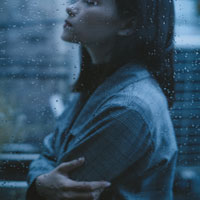Dreaming during COVID-19: the effects of a world trauma

All claims expressed in this article are solely those of the authors and do not necessarily represent those of their affiliated organizations, or those of the publisher, the editors and the reviewers. Any product that may be evaluated in this article or claim that may be made by its manufacturer is not guaranteed or endorsed by the publisher.
Authors
On March 11, 2020, the World Health Organization (WHO) declared a state of health emergency affecting the entire world population. Given the serious practical and psychological difficulties and complications that have been experienced during this period, many scholars have created hypothesis, as a consequence, an increased possibility of developing post-traumatic stress disorder (PTSD) within the general population with significant implications for one’s dream activity. Participants in the study were recruited via the instant messaging application ‘WhatsApp’ for a period of 14 days. The study consisted of three phases: the first phase provided information on the purpose of the research and how to carry it out; in the second phase, each participant, using the Bionian model of dream experience as a focus, was asked to write down dreams, emotions and free connections/associations related to the dream. At the end of the collection, the texts obtained were analysed by means of a qualitative analysis performed with the aid of the MAXQDA software. The study confirms the computational and exploratory analysis of the text carried out in the research of Pesonen et al. (2020), finding also in our sample the presence of the hypothesized clusters going to explain the manifestation of imagery related to COVID-19 also within the dream activity. To confirm this, the nightmare of participant number 6 of the study is reported. The following qualitative research has offered an insight into the traumatic nature of the COVID-19 pandemic, showing how many unmetabolized ‘daytime elements’ have been reproposed in the dream scenario, recalling the symptomatology of PTSD through the presence of distressing content that affect the quality of sleep and the daily life of the individual.
How to Cite

This work is licensed under a Creative Commons Attribution-NonCommercial 4.0 International License.






